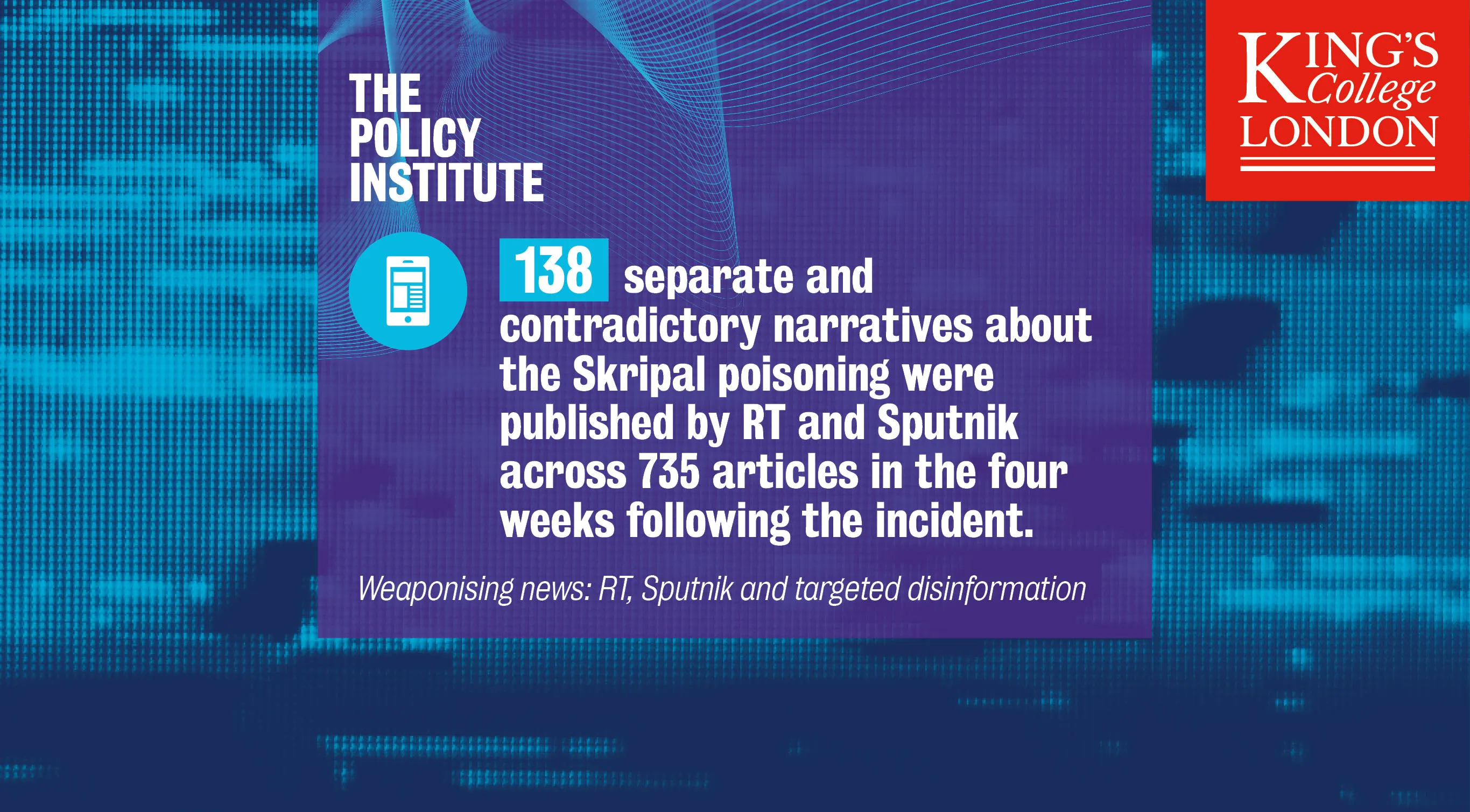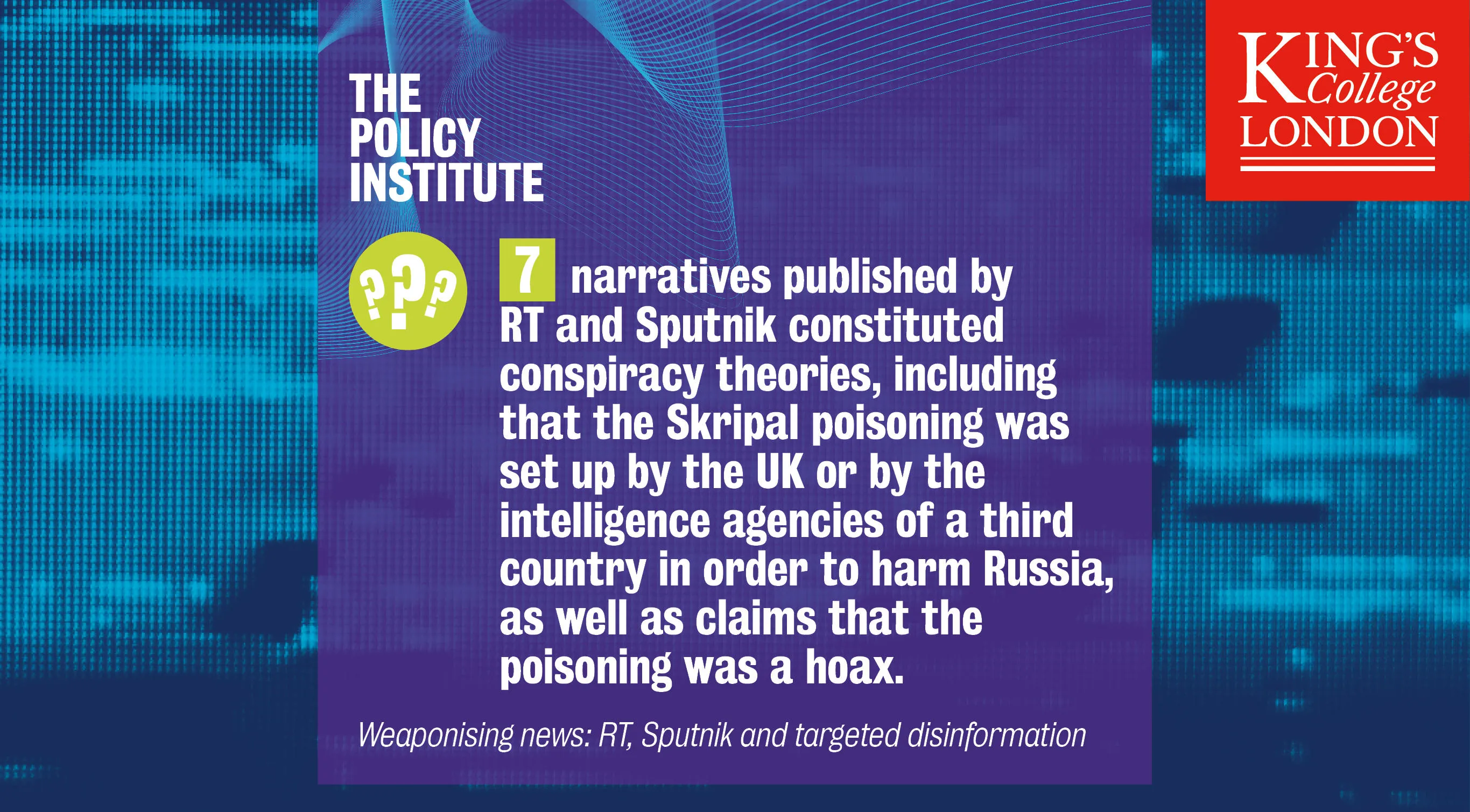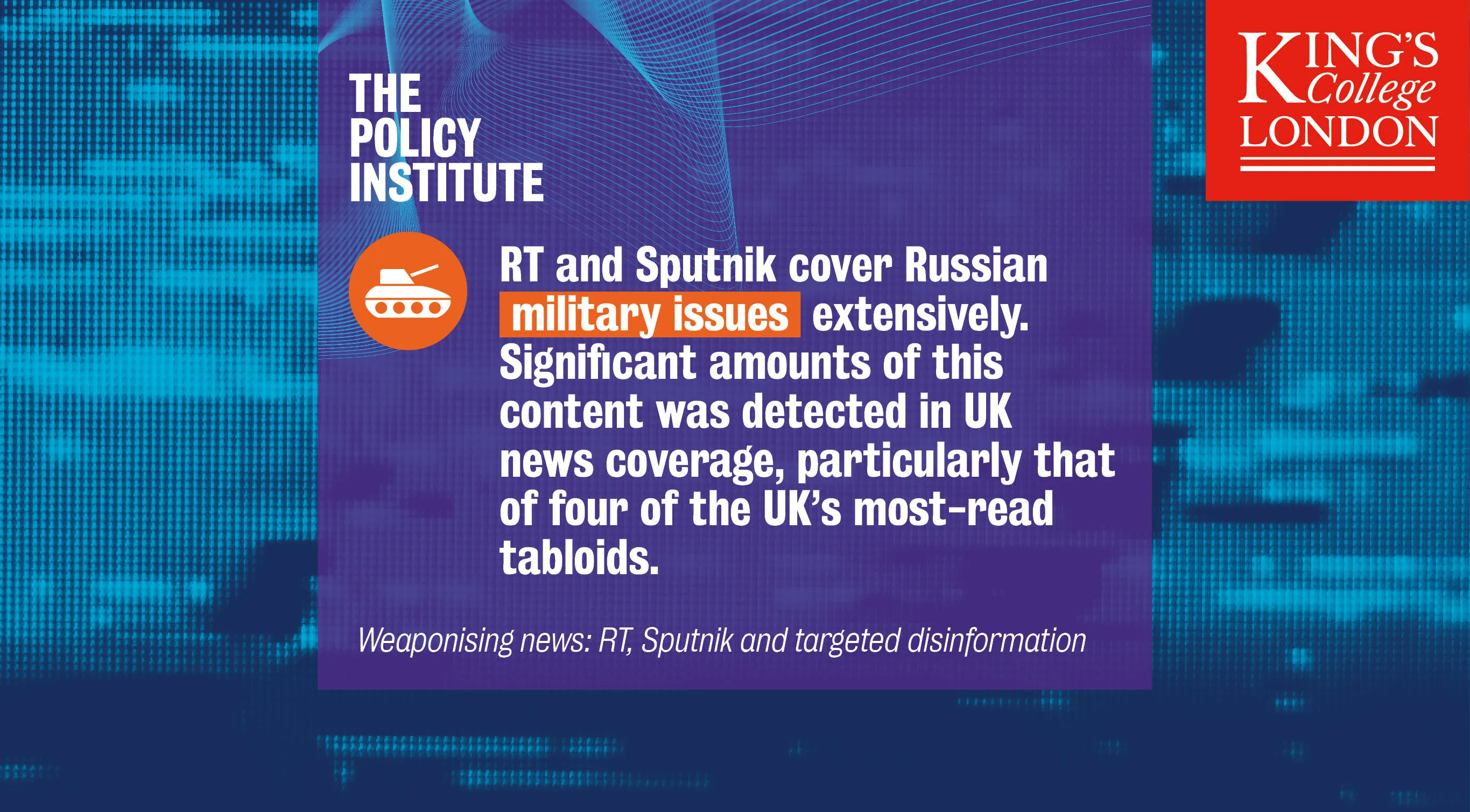RT’s and Sputnik’s coverage of the Skripal incident had all the features of a disinformation campaign; they sought to sow confusion and uncertainty through a vast array of contradictory narratives and unchallenged conspiracy theories. Understanding the extent to which these techniques can exist within state-linked outlets like RT is an important step towards preventing the spread of disinformation and its damaging effect on journalism and public discourse.
Dr Gordon Ramsay, lead researcher
01 March 2019
Russian state media weaponises news to sow confusion and division
How RT and Sputnik spread disinformation on the Skripal attack and more

Media outlets RT and Sputnik perform a "damage control" function for the Russian state during incidents such as the poisoning of Sergei and Yulia Skripal and deploy a range of tactics to project Russian strength and construct news agendas.
The finding comes one year on from the Skripal poisoning, from the first comprehensive study of how RT and Sputnik sow confusion and division in the UK and beyond, carried out by the Policy Institute at King's College London.
The study finds that RT and Sputnik published 138 separate and contradictory narratives about the Skripal poisoning across 735 articles in the four weeks following the incident, incorporating the views of a 'parallel commentariat' and the amplification of Russian government sources
Weaponising news: RT, Sputnik and targeted disinformation (pdf) is based on an analysis of nearly 12,000 articles published in English by the two outlets and over 150,000 online articles by UK news outlets. The articles were collected between May and June 2017, and in March 2018, in the immediate aftermath of the Skripal poisoning.

A range of competing narratives were found to have been used around the Skripal incident, including:
- 32 narratives relating to the response of the UK and its allies to the Salisbury poisoning, including that the response is driven by inherent "Russophobia", that the investigation was a "witch hunt" and that the UK’s response to the poisoning was illegal.
- 20 narratives about Novichok – the substance identified as having been used in the poisoning – including that it could be from the UK, the US, Ukraine, Iran, or a number of other European or post-Soviet states.
- 16 narratives about the Skripals themselves, ranging from the allegation that links to organized crime explain the poisoning, to claims that Yulia Skripal brought the nerve agent into the UK and that the Skripals were never, in fact, poisoned.
- Seven narratives that constitute conspiracy theories, including that the poisoning was set up by the UK or by the intelligence agencies of a third country in order to harm Russia, and claims that the incident was a hoax, with the poisoning never having taken place.

The study also finds that RT and Sputnik cover Russian military issues extensively, providing compelling detail and multimedia content on advanced weaponry. Significant amounts of this content was detected in UK news coverage, particularly that of four of the UK’s most-read tabloids – the Daily Mail, Express, Sun and Daily Star – including a small number of instances of Russian news content on military matters being directly reproduced without attribution.

RT and Sputnik coverage of European and North American democracies – including the UK, US, France, Germany, Sweden, Italy and Ukraine – was overwhelmingly focused on issues of social and political dysfunction, including coverage of the negative effects of immigration largely extracted from local news sources, repackaged and translated for English-speaking audiences.
Read the report (pdf)
